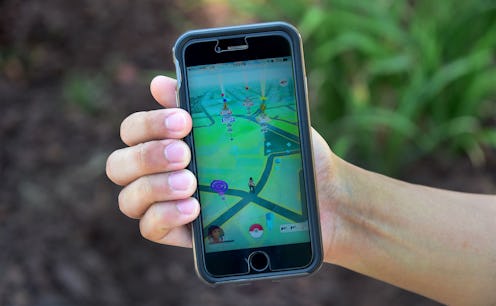So. "Pokemon Go." Probably your favorite game, right? And you've got all the tips and tricks down? And you're going to start putting "professional Pokemon trainer" on your LinkedIn profile? So, tell me, then: What do leaves mean in "Pokemon Go?" Yes, leaves. You know, those things in nature that grow on trees in real life? Because, as a professional Pokemon trainer, you should know that digital leaves leave some great clues. (Yeah, I know. I'm cancelled. I deserve that.)
Before I go any further, I will note that this is... well, not exactly some deep dive "Pokemon Go" ish, but something that probably won't make much sense to you unless you are either playing or thinking about starting to play the game. If you're a more recent arrival to the "Pokemon Go" scene, then may I suggest reviewing the "Pokemon Go" basics, nosing around this great list of general "Pokemon Go" hacks, and checking out which team (a post-level 5 thing) is considered the best in addition to this very academic discussion about, um, leaves.
So here's the deal: The map screen is where you'll spend most of your time when you're not actively throwing Pokeballs at Pokemon or fighting in gyms; it's a map of the real world, generated thanks to the wonders of GPS. When you see something that looks like little animated leaves appear in a spot on the map screen, what that actually is, is something known as "rustling grass" — and it means that Pokemon might be nearby. Like, very close. Like, if they were really there in actuality, they would be rustling the grass all around you with their little claws or hooves or horns or whatever. I don't know why I find that to be the cutest detail yet to emerge from this game, but I very much do.
Worth noting is that just because the grass is rustling doesn't necessarily mean that a Pokemon is absolutely, for certain going to appear; that's how you can end up in situations like this one:
Rustling grass does, however, mean that there's a relatively good chance that a Pokemon will spawn, so keep those eyes open.
Li'l rustlin' leaves aren't the only way you can tell that Pokemon are close, though. Here are a few more indicators to watch out for:
1. Paw Prints
Paw prints appear on the Pokemon tracker; tap the gray icon in the lower right hand corner of the map screen to access it. The higher the number of cute pawprints, the farther away the Pokemon. Just one li'l pawprint? They're close! They're so close!
2. Radar Rings
Your trainer avatar radiates a purple ring on the map, which Apple device-focused tech site iMore describes as "essentially, your 'reach' in discovering nearby Pokemon." These radar things are not only great for sensing which Pokemon are in your direct vicinity; they're also helpful for drawing out Pokemon from restricted buildings — like, you know, police stations, offices, places you really shouldn't be hunting Pokemon. The radar rings will draw out the Pokemon so you can stay safely outside.
3. Stampedes
Hey, if a bunch of humans are simultaneously running and looking exclusively at their phones, there's probably some cool Pokemon thing nearby. So just run with 'em. Maybe you'll make some new pals. Just, y'know... be safe.
Image: Giphy
